(23924 products available)



































































































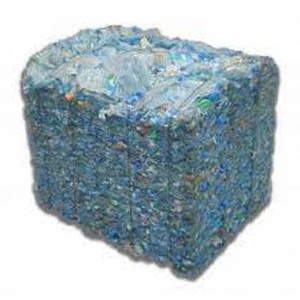
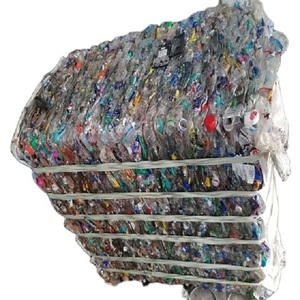
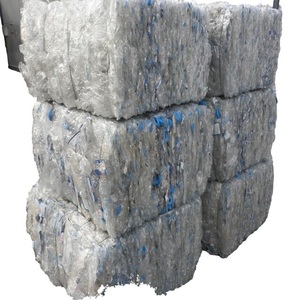

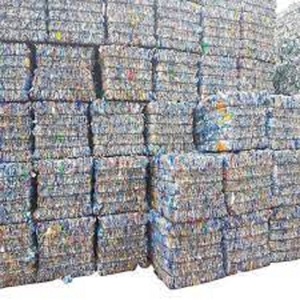
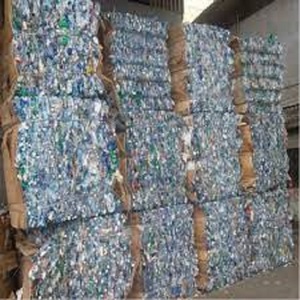






















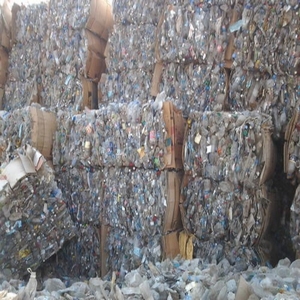





















































PET PE scrap refers to polyethylene terephthalate and polyethylene scrap. They are both prominent types of plastics that have become ubiquitous in modern society due to their versatility, durability, and cost-effectiveness. Elaborating these two types of plastic, they made out of different polymers, exhibit distinct properties and are used for various applications. Nevertheless, one can recycle both efficiently.
Here is a rundown of the types:
PET plastic is the most common plastic. People know it by its recycling symbol No. 1. This thermoplastic comes from virgin PET resin, which is manufactured for producing beverage bottles, food containers, synthetic fibers, and packaging materials. PET is highly transparent, lightweight, and resistant to impact and chemical. This makes it ideal for food and beverage packaging.
PET scrap comes from post-consumer or post-industrial sources. Such sources include discarded bottles, containers, and manufacturing waste. This material is sorted, cleaned, and processed into recycled PET (rPET), which can be reused in making new products. These products include new bottles, textiles, or industrial fibers.
Polyethylene, the most manufactured plastic worldwide, exists in several forms. These forms include Low-Density Polyethylene (LDPE) and High-Density Polyethylene (HDPE). Each type possesses unique characteristics suitable for specific applications. LDPE, identifiable by Recycling No.4, is flexible and resistant to moisture. People have used it to manufacture plastic bags, film wraps, and squeeze bottles. Conversely, HDPE, symbolized by Recycling No. 2, is rigid and high-density. This makes it ideal for producing milk jugs, detergent bottles, and rigid containers.
Like PET, PE scrap is obtained from post-consumer sources. Post-consumer sources include discarded plastic bags, containers, and packaging materials. Moreover, this scrap undergoes sorting and cleaning. Thereafter, it is transformed into recycled polyethylene (rPE). rPE is then used to manufacture new bags, containers, and outdoor furniture.
PET and PE plastics possess reusable inherent features. This makes their expanding usage demand in the contemporary society inevitable. Here is a detailed look at some of these features:
Durability and Versatility
One of PET's indispensable features is its durability. Its resistance to impacts, chemicals, and UV radiation, coupled with outstanding thermal stability, makes it suitable for varied applications. Also, its versatility allows for easy molding into diverse shapes and sizes.
Transparency and Clarity
PET containers are highly transparent. Thus, they offer superior product visibility compared to other materials. This is particularly useful in food and beverage packaging where visual appeal is crucial.
Lightweight
PET remarkably outweighs glass and other materials. As such, it offers a lighter weight container in which the transportation cost and energy consumption are significantly reduced.
Recyclability
PET stands out due to its high recyclability. In detail, recycling PET conserves resources, reduces environmental impact, and contributes to a circular economy. This makes consumers’used PET bottles and containers increasingly being accepted for collection and recycling.
Heat Resistance
Furthermore, unlike other typical plastics, PET can withstand temperatures up to 120°C. This makes it ideal for hot-filled products and recycling processes involving heat treatment.
Low Density Polyethylene (LDPE)
LDPE is flexible and resilient. It can withstand varying temperatures, punctures, and tearing. Further, it is incredibly light. These qualities are integrated into plastic bags, film wraps, and squeeze bottles that are molded from LDPE.
High Density Polyethylene (HDPE)
Conversely, HDPE is rigid, high-density, and recyclable. It is unrepentantly used in milk jugs, detergent bottles, and outdoor furniture among others. In addition, these containers manufactured using HDPE provide a strong and durable alternative that can be reused or recycled.
Chemical Resistance
Moreover, PE scrap is unassailably resistant to a wide array of chemicals. This makes it a staple in packaging for household cleaners, chemicals, and industrial products.
Insulation Properties
PE is also favorable for electronics as it provides good insulation properties. It is also used in wires and cables.
Lightweight and Strong
PE plastics effortlessly combine lightweight construction with exceptional tensile strength. Even though it is lightweight, PE is strong enough to carry heavy loads. Thus, it is ideal for bags and containers.
Generally, there is a wide range application of PET and PE scraps. Below is a list of the common ones:
Textiles
Recycled PET (rPET) is commonly used to make fibers for clothing, carpets, and other textiles. Using PET scrap in the textile industry reduces reliance on virgin materials. It also minimizes energy consumption during production.
Packaging
Canisters made from rPET allows for sustainable packaging solutions for food, beverages, and consumer goods. This helps to reduce plastic waste in landfills and oceans. Moreover, brand image is enhanced as a result of packaging utilization of eco-friendly materials.
Automotive Parts
To reduce weight and improve fuel efficiency, rPET is used in automotive applications. These applications include parts like seat covers, carpets, and interior panels.
Construction Materials
rPET is also used in the construction industry. Here it is used in manufacturing insulation materials. Such materials include thermal and acoustic insulation for buildings.
Packaging
Low-density polyethylene recycled PE is massively used in flexible packaging. Such packaging include plastic bags, wrap films, and left-over containers. This is due to its durability, light weight, and adaptability.
Containers and Bottles
Recycled HDPE is used to manufacture new bottles and containers. This includes milk jugs, detergent bottles, and personal care product containers. This reuse reduces environmental pollution and conserves resources.
Industrial Applications
PE plastic scrap is used in industrial applications like piping systems. This is due to its resistance to moisture, chemicals, and corrosion. PE pipers are commonly constructed from HDPE to transport water, chemicals, and other liquids safely.
Construction Materials
Moreover, PE scrap can be found in the construction industry. It is used for making composite materials. These materials include wooden plastics used in decking, fencing, and other outdoor structures.
To select the suitable PET and PE scrap for one’s intended purpose, it is paramount to consider several key factors. Here are some of them:
Choose PET scrap free from contamination like food residues, labels, or non-PET materials. Furthermore, opt for post-consumer PET like used bottles and containers or post-industrial scrap like leftover manufacturing products. Ensure they are sorted and processed by a reputable recycler.
Usually, different types of PET and PE scrap have distinct specifications. These specifications include grades, colors, and forms (flakes, bales, or pellets). Therefore, ensure the scrap purchased meets particular requirements. In some cases, adhere to industry standards. Conversely, demand certification like ISO to guarantee quality and consistency.
It is crucial to ascertain the desired amount of PET and PE scrap from reliable sources can sometimes prove challenging. This is particularly when specific quantities are required for large-scale projects. This is because fluctuations and seasonality can affect availability. So, purchasing an adequate quantity to meet one’s needs is paramount.
Recycling plastics can be an expensive undertaking. Primarily because it is bulky and lightweight. Therefore, consider transportation costs, delivery times, and scrap materials' environmental impact when choosing PET and PE scrap.
One should conduct thorough research on the current market prices of PET and PE scraps. Also include historical trends, price volatility, and the potential for future increases or decreases. Normally, these aspects aid in making informed decisions. To save costs, prioritize purchasing during periods of market stability.
A.1. The first step involves collection and sorting where PET bottles and containers are collected and sorted. The sorted materials are then washed to remove contaminants like labels, caps, and residues. PET scraps are then processed into flakes through shredding and grinding. Note that the flakes are further heated to remove moisture. The cleaned and dried flakes are finally melted and molded into new products.
A2. The main difference between recycled PE and virgin PE lies in their material sources. While the former comes from post-consumer or post-industrial sources that have been collected, sorted, and cleaned, the latter is made from newly created plastic resins. Although both types of polyethylene share similar properties, recycled PE has a lower environmental impact. This is because it reduces waste and resource consumption.
A3. Recycled PE is commonly used for manufacturing outdoor furniture, building materials, and packaging films. In these products, the materials produced are durable and weather-resistant. They offer sustainable alternatives to virgin PE. Additionally, it is also used in the agricultural sector to produce mulch films that aid in crops protection and enhancement.
A4. Recycling both scraps conserves resources such as energy and water, which are typically utilized in producing virgin plastic. It reduces manufacturing costs, particularly in industries where recycled materials are used. Occasionally, recycled materials demand lower costs. Further, it stimulates job creation in collection, sorting, and processing, thus contributing to the economy.